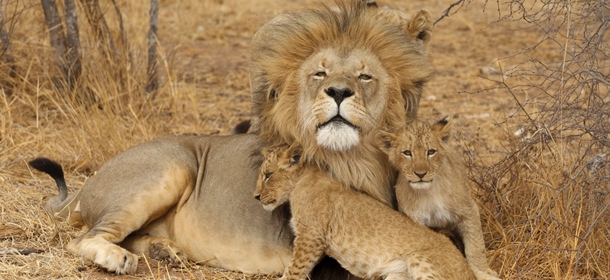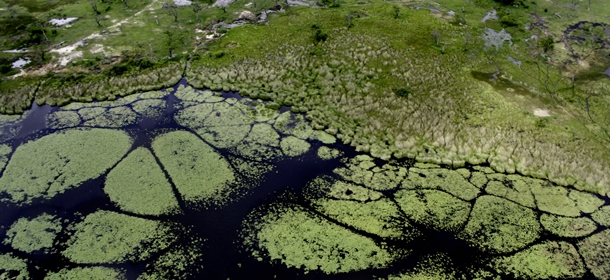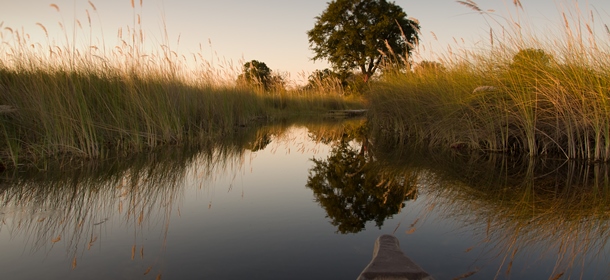 Botswana is one of those places you’ve heard of but you might be hard pushed to point out on a map. This beautiful and peaceful country is to be found down in Southern Africa and it is nestled in between South Africa,Zambia, Namibia and Zimbabwe.
Botswana is one of those places you’ve heard of but you might be hard pushed to point out on a map. This beautiful and peaceful country is to be found down in Southern Africa and it is nestled in between South Africa,Zambia, Namibia and Zimbabwe.
This place is huge. It is twice as big as the UK but only has a just under 2 million inhabitants. The vast majority of the country is undeveloped wilderness under a hue African sky. This makes is a great sanctuary for wildlife and therefore an absolutely fantastic safari destination. When you stay in a safari lodge or safari camp in Botswana you really are getting away from it all. You and the handful of other guests will be hundreds of miles away from city lights, noise and pollution. Nothing but you and the stars and the wildlife. The lodges and camps on offer in the Okavango, the Moremi Game Reserve or the Chobe National Park range from simple eco-friendly camps up to total luxury and most tend to be small, intimate affairs with a small environmental footprint.
 Botswana is most famous for the unique natural phenomenon which is the Okavango River Delta. It is the only river in the world that does not flow into the sea. Instead the river flows down from Angolaand the water pools in the large flat depressions found across Botswana. These create large areas of marshes and wetlands intercut by lakes and rivers, creeks and lagoons during the wet season. This enormous area of wetlands is a wildlife haven and offers fantastic wildlife experiences. You can travel across the wetlands and down the channels by “mokoro”, which is the traditional canoe hollowed out of the trunk of a single tree. Don’t worry you wont be expected to master this yourself but you will be accompanied by an expert guide who can paddle you through the waters. If you are a bird watcher then the Okavango is an dream destination as this is one of the best places in the world for bird watching.
Botswana is most famous for the unique natural phenomenon which is the Okavango River Delta. It is the only river in the world that does not flow into the sea. Instead the river flows down from Angolaand the water pools in the large flat depressions found across Botswana. These create large areas of marshes and wetlands intercut by lakes and rivers, creeks and lagoons during the wet season. This enormous area of wetlands is a wildlife haven and offers fantastic wildlife experiences. You can travel across the wetlands and down the channels by “mokoro”, which is the traditional canoe hollowed out of the trunk of a single tree. Don’t worry you wont be expected to master this yourself but you will be accompanied by an expert guide who can paddle you through the waters. If you are a bird watcher then the Okavango is an dream destination as this is one of the best places in the world for bird watching.
Another natural spectacle not to be missed are the incredible salt pans. During the dry season some of the depressions completely dry out and transform the landscape. They form enormous salt pans creating barren white deserts which stretch across the horizon as far as the eye can see. At Makgadikgadi there is a network of enormous salt pans which cover an area of approximately 16,000 kms sq. which is the second largest in the world after the Bolivian salt pan at Salar de Uyuni.
 The main area for safaris in the North East of the country is the Chobe National Park. This is another extremely large area of African bush and a total wilderness. It offers great game viewing as it is lush and green during the rainy season unlike the neighbouring Kalahari Desert. The Chobe River is the area’s lifeline and it is also home to many hippos and elephants along its banks. It is also great for viewing predators such as the big cats and crocodiles along with huge varieties of antelope and other herbivores which roam the grasslands en masse.
The main area for safaris in the North East of the country is the Chobe National Park. This is another extremely large area of African bush and a total wilderness. It offers great game viewing as it is lush and green during the rainy season unlike the neighbouring Kalahari Desert. The Chobe River is the area’s lifeline and it is also home to many hippos and elephants along its banks. It is also great for viewing predators such as the big cats and crocodiles along with huge varieties of antelope and other herbivores which roam the grasslands en masse.